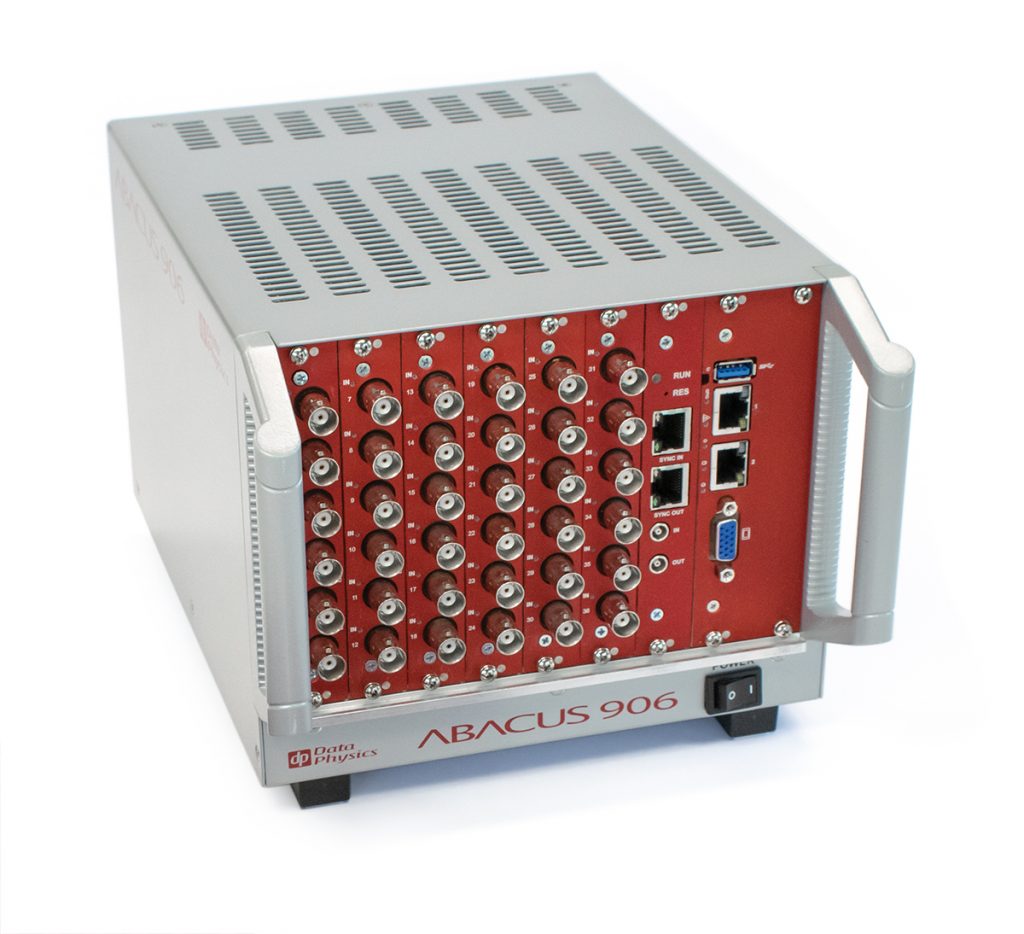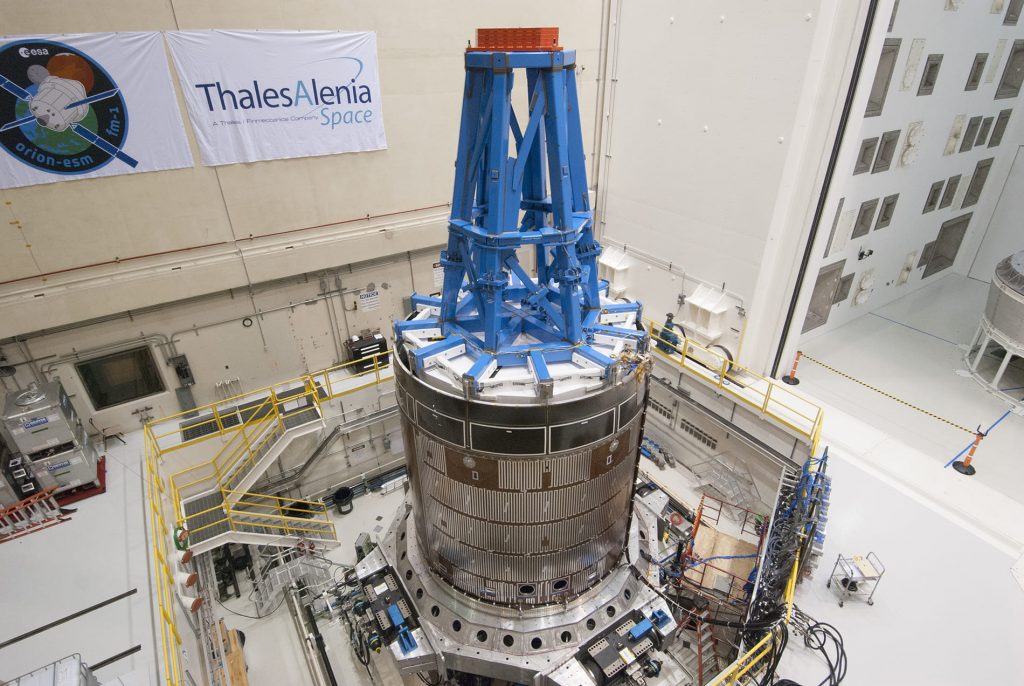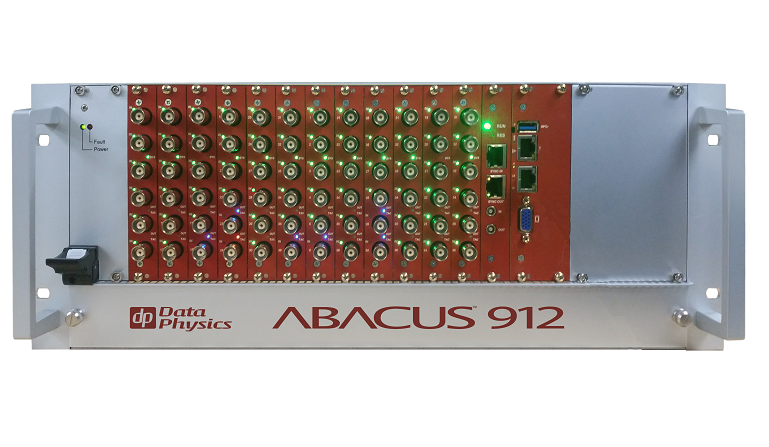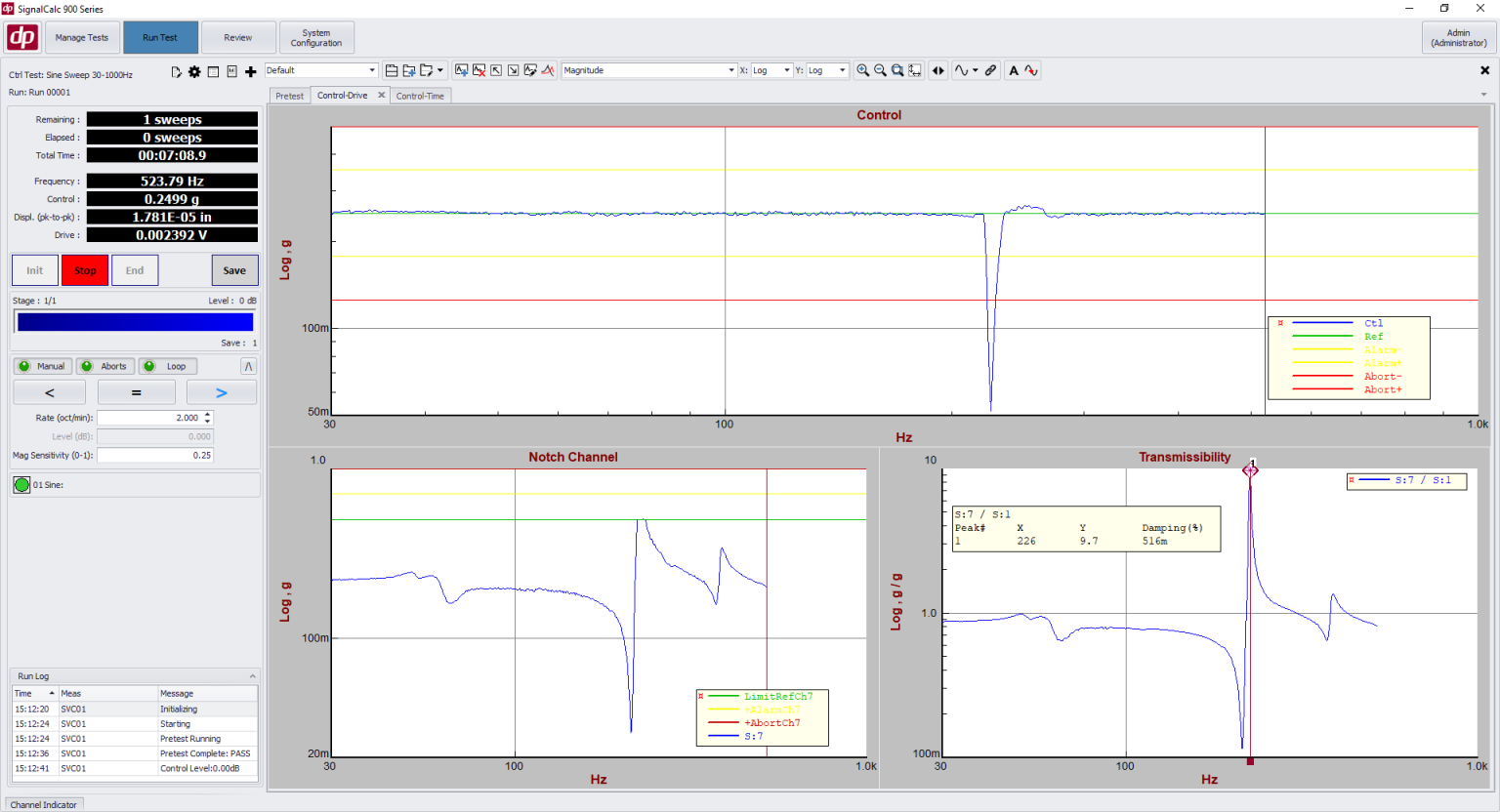A Vibration controller for satellite testing applications
A Feature-Rich, Risk-Averse Vibration Controller Perfect for Satellite Qualification Testing
The 900 Series platform’s decentralized design is intrinsically safe from unexpected failures during a satellite controller vibration test. It has optimized algorithms to protect against over test, and has unique features which make post-processing data a thing of the past. The 900 Series controller streamlines the process of understanding what happened during a controller vibration test, or why the test aborted.

Designed from the Ground Up with Test Safety and Data Protection in Mind.
- Any crash or failure in the host PC simply causes the vibration controller to ramp down the shaker. Time history recordings do not stop, and no data is lost.
- Each controller includes a dedicated input that can be connected to mechanical subsystems. A failure in any subsystem triggers the test to safely ramp down.
- The vibration controller ensures that if the test shuts down for any reason, the test will smoothly ramp to zero, protecting valuable flight hardware.
- During test execution, data is stored locally on the controller’s solid state disk drives; and can be transferred to the PC or exported after the test completes. Time history recordings can be transferred after test, or while the test is still running.
Math Channels for Control or Limiting
Math channels can be created from input or other math channels; and are calculated gap-free as the test executes. Operations include addition/multiplication/division, filtering, integration/differentiation, and more. Math channels behave exactly like physical input channels.
Math channels can be used to compute summed forces, overturning moments, displacements (from accelerometers), coordinate transformations, and more. Any math channel can be used as a part of a control loop; as a control or Notch/Limit channel.

Protecting Against Over Test (Limiting/Notching)
Limiting (notching) protects against overtest by restricting how hard the shaker is driven during a test, based on pre-defined limit profiles.
It is critical that the control and limiting algorithms operate with untra-low latency to prevent overshooting the target limit profile. The 900 Series has been optimized specifically for this.
Real-Time Notching – Notches the drive when a Limit channel exceeds its limit profile.
Predictive Notching – Preemptively notches the drive at frequencies where a limit channel is expected to exceed its profile, based on pretest data.
Transient Abort – Trigger test aborts based on Abort profiles, or a peak transient level. Peak transients can be monitored gap free.
Filter/Peak/RMS – Use Filter/Peak/RMS detection modes on the same input channel to catch aborts at or outside the frequency of excitation.
Advanced Measurement Features
Packed with advanced features, the 900 Series controller re-defines what is possible to do in real-time during a satellite qualification test.

High Channel Count – Eliminate the need for a secondary acquisition system. The distributed architecture allows the controller to function simultaneously as a high channel count Sine Data Reduction analyzer, without any processing bottlenecks slowing the control down.
Secondary Measurements in Real Time – Additional measurements can run in parallel with the Sine test. Measure FFTs and plot them on a waterfall plot to visualize harmonic distortion during a test – all live during test with no post-processing.
Advanced Time Data Recording – Time data recording up to 216 kHz, for all channels. Data can be exported automatically to Matlab or other format after a test or while the test is still running, facilitating analysis of data between test runs. Data can also be resampled and recorded at multiple sample rates simultaneously.


